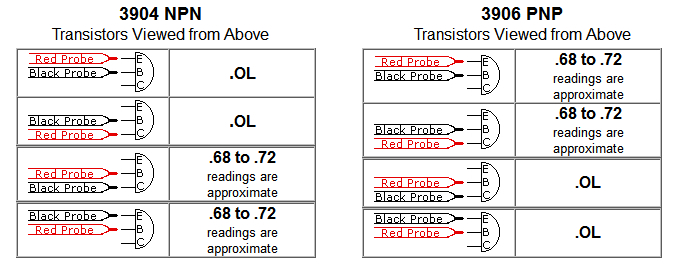Given how important transistors are to electric circuits, it is unfortunate that they are easily damaged due to mishandling  either by,
either by,
- placing the wrong value resistor into a circuit.
- placing the transistor into the circuit backwards
- heating the transistor for too long with a solder pen.
To further complicate the issue, it isn't easy to determine whether a transistor is blown without the support of a DMM. Fortunately, there is a simple method to determine if your transistor is working properly.
- Set your DMM to "Diode" (Internal diodes form an important component within a transistor and we're going to determine whether they remain viable)
- Take the transistor out of the circuit and place it (isolated) into the breadboard. The 3 legs should not touch.
- Connect the probes as shown below and confirm the suggested results for a working transistor.

Your transistor is BLOWN if,
- an OL reading comes back when you should get a reading. (the internal diode is burnt out)
- a Reading comes back when it should be OL. (the internal diode is shorted)
- a Reading is completely out of range. (below .6 or above .8)
![]() either by,
either by,